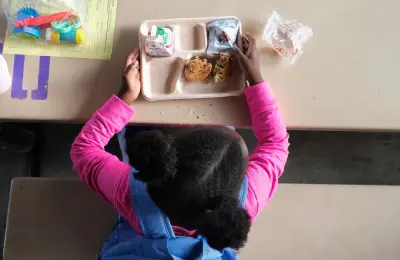Opinion: Sugar is making our kids sick. Why are schools serving it?

The nut free butter snack one of our -year-olds got at their on-site after-school plan had almost as much sugar as four sugar packets We wondered how could this be a safe and approved snack for kids As pediatricians and nutrition experts we were not surprised This experience echoes a larger challenge we see in our clinical practices and research laboratories More and more children experience vitality problems we used to see only in adults For example several kids now have too much fat in their livers the end-result of excess sugar and calorie consumption This condition informally known as fatty liver ailment is now the top reason adults in the U S need liver transplants We are also seeing children with high blood pressure diabetes and sleep apnea diseases that lead to heart syndrome stroke and a shorter lifespan Obesity used to be rare in kids Now it s common and it affects their vitality in a large number of procedures The numbers are serious The U S Centers for Sickness Control and Prevention says childhood obesity has tripled in the past years now affecting more than one in five kids Meanwhile fatty liver sickness in kids has also gone up mirroring the obesity epidemic A big part of the concern is added sugar especially from processed foods and sugar beverages which contributes to obesity insulin resistance and liver damage California is doing a lot to help The Universal Meal Activity provides at least two free meals per day These free meal programs have helped to reverse the rise in childhood obesity These meals follow strict nutrition rules and are often healthier than food kids eat at home Gov Gavin Newsom of late signed an executive order to take a closer look at processed foods in schools That s a great step forward But there s still work to do Kids eat numerous of their daily calories at school or in on-site after school programs so what they eat there matters a lot Particular snacks in schools still have too much sugar even if they are labeled healthy or allergen-free This can be extra harmful for kids who depend on school food as their main source of nutrition What can we do We can start by removing snacks and drinks with added sugar from schools Right now schools focus on the percentage of added sugar in each serving of food but they do not limit the total quantity of sugar kids are served in a whole day across the school day and on-site after school programs On-site after school programs also have weaker standards This means kids can end up eating too much sugar especially in high-calorie snacks like the nut-free butter we mentioned Related Articles As mentor burnout deepens states scramble to fill school job vacancies Los Gatos students awarded scholarships tools Last Bay Area speller eliminated at National Spelling Bee National Spelling Bee The Bay Area contestants and how to watch San Jose students teachers protest assistant principal over alleged racism Experts like the American Academy of Pediatrics and American Heart Association recommend kids should have no more than grams of added sugar per day and no more than one -ounce cup of sugary drinks per week Just one school snack can have grams of added sugar That s already more than half the daily limit Ultra-processed foods with high quantities of added sugar perpetuate the obesity epidemic Instead of processed snacks with added sugar schools should serve more fresh fruits and vegetables Added sugar has no place in school food As California s learning leaders respond to Newsom s order we urge them to make strong changes We also call on parents to speak with their schools and for residents to contact their lawmakers Let s push for lower added sugar limits in school meals and on-site after school programs What we feed our kids in the current era will affect their fitness for the rest of their lives California has a chance to lead the way By cutting sugar in school meals and snacks we can help prevent obesity liver affection and more Let s make sure every child gets the healthy food they need to grow and thrive Sharad Wadhwani and Jennifer Woo Baidal are physicians and associate professors of pediatrics at respectively UCSF and Stanford University School of Medicine


